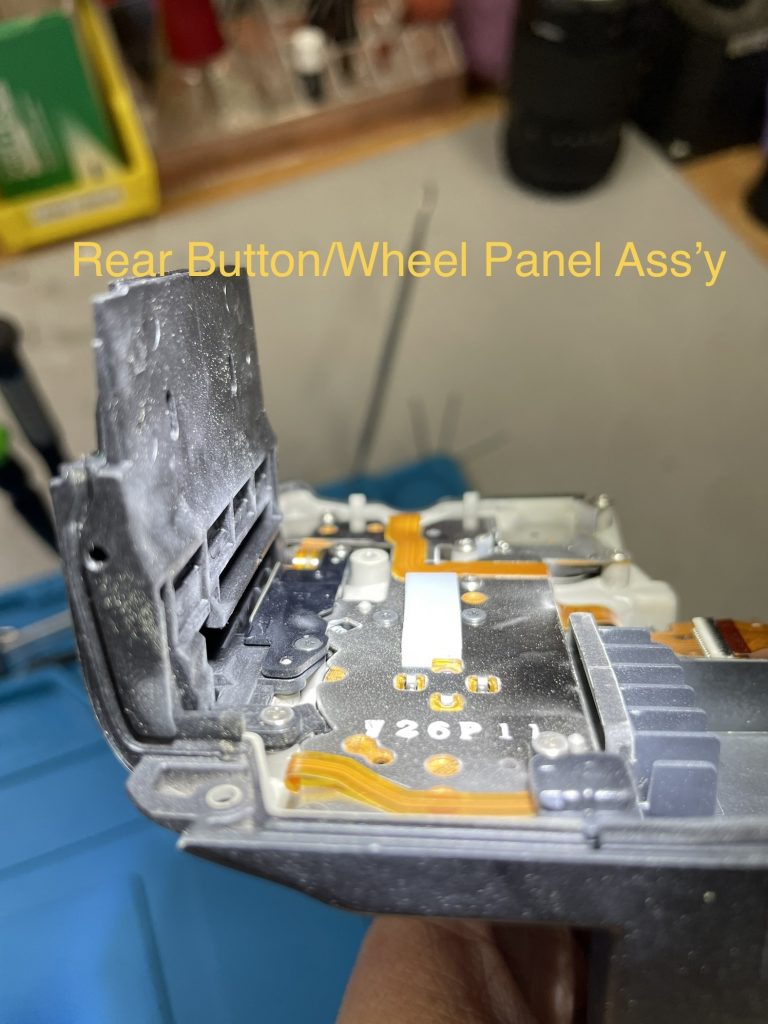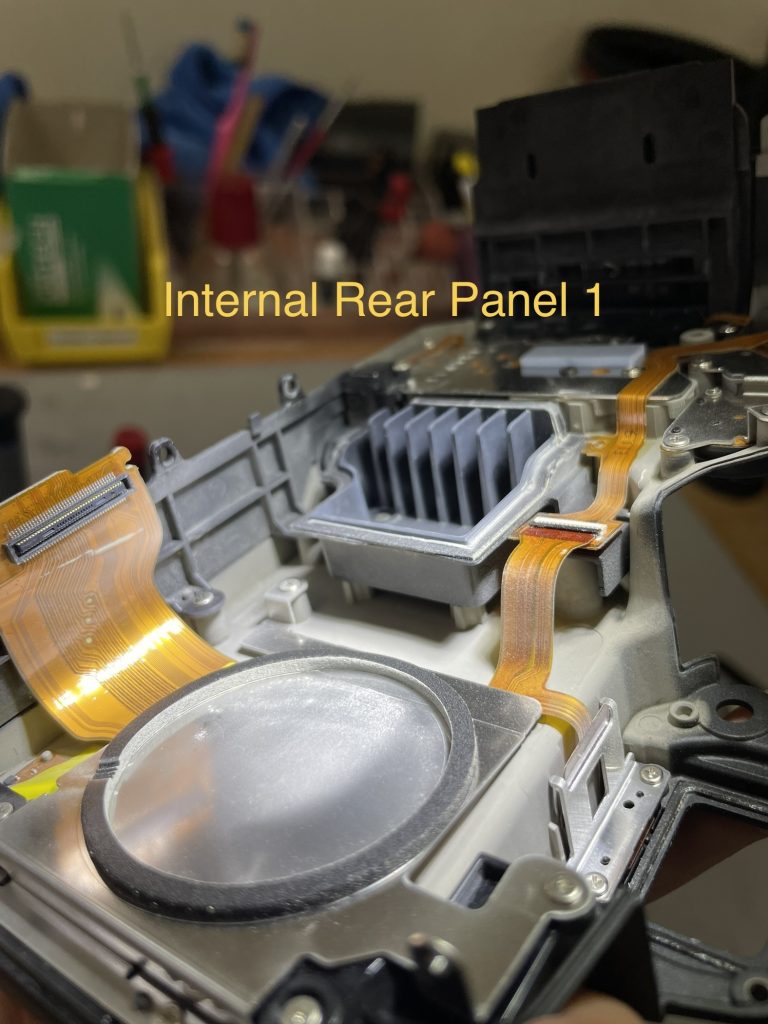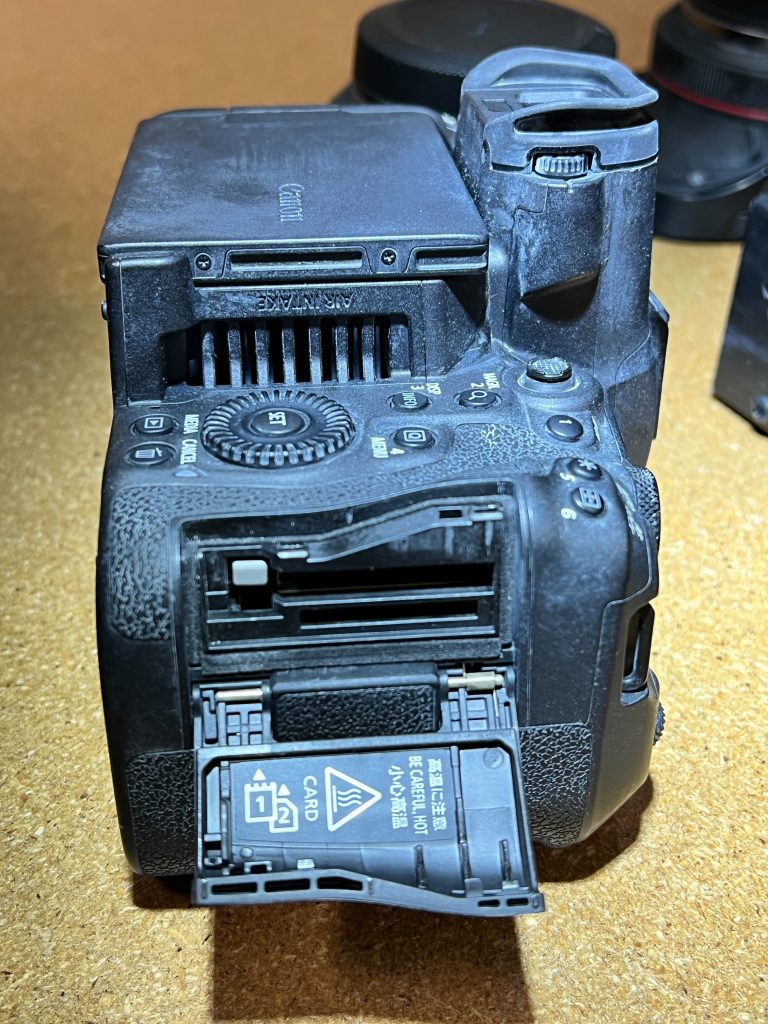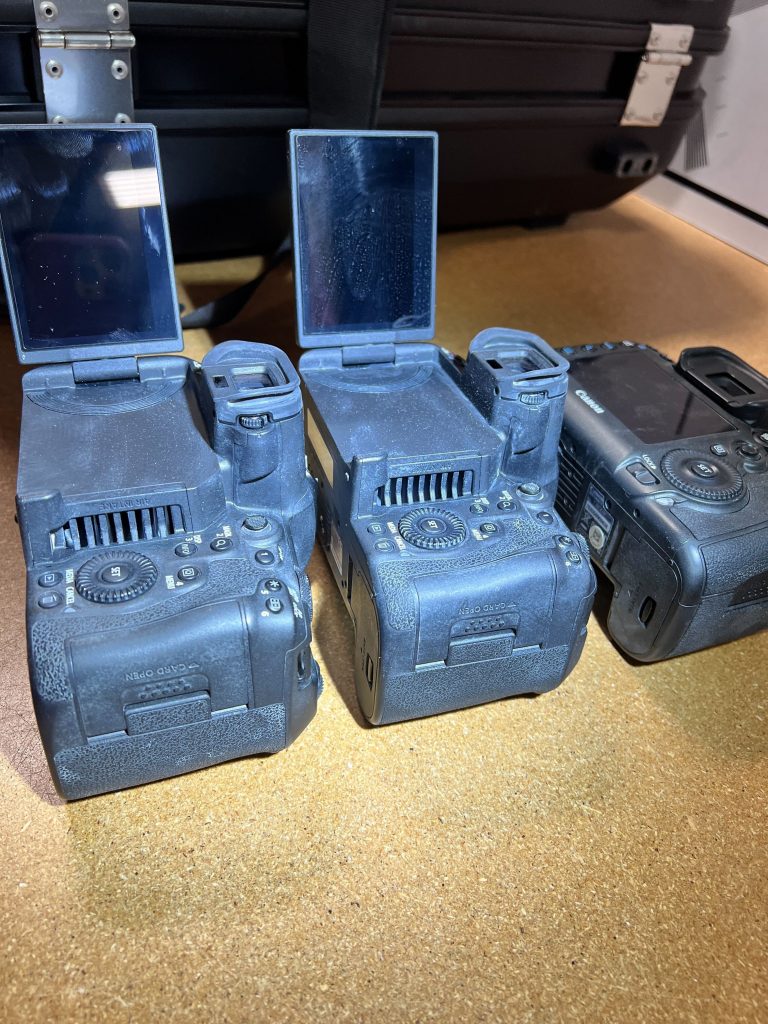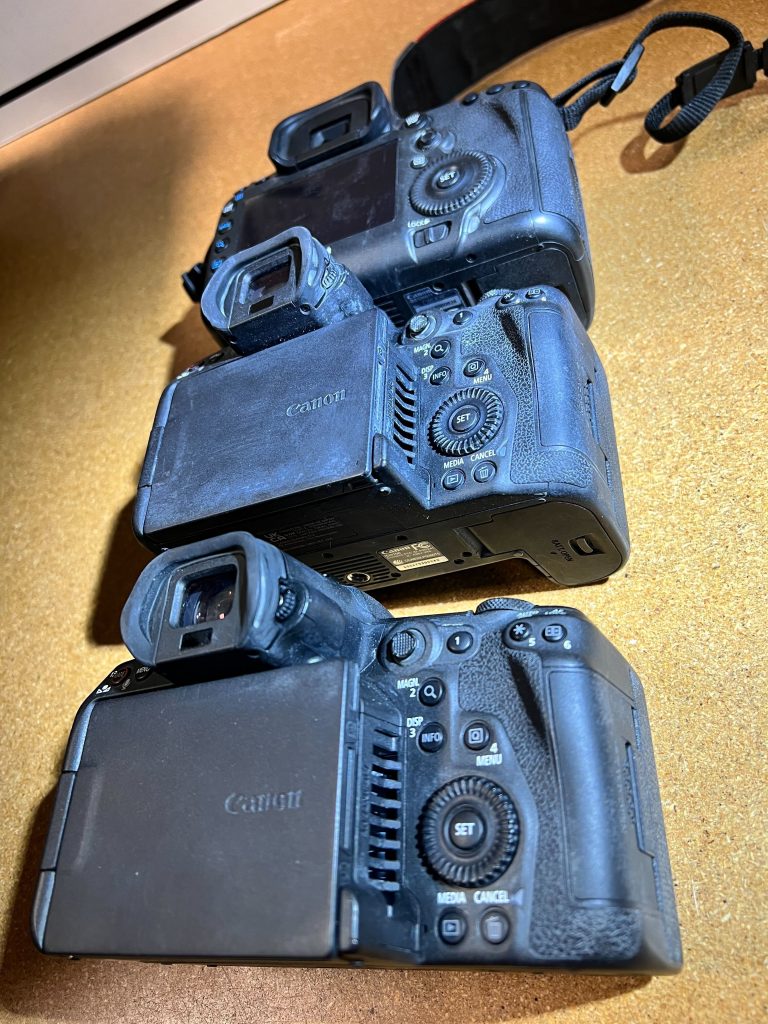Equipment
How to Quickly Ruin Your Camera and Lens
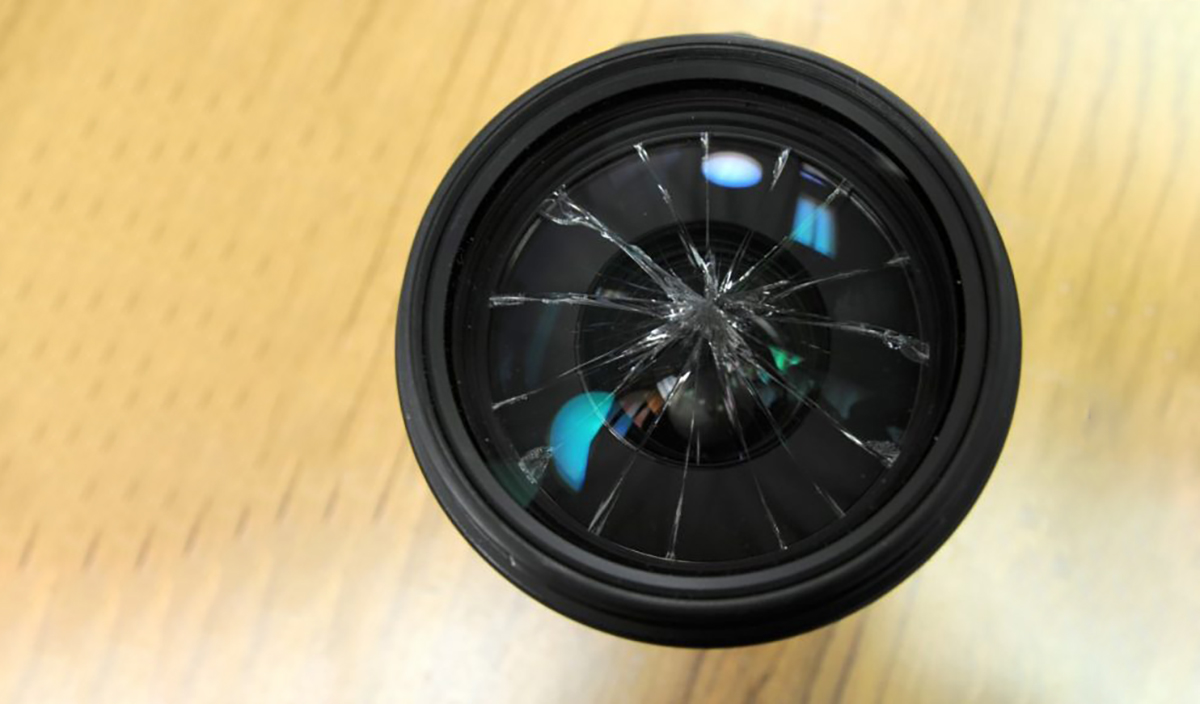
Typically, this blog stands on the idea of “Please protect your gear, and if it’s our gear you’re renting from us, please absolutely protect the gear”. However, mistakes happen, and things break. When you have an inventory as large and diverse as ours, that reality happens way more than we’d care to admit. So after seeing thousands of broken cameras and lenses over the years, I figured we could write a pretty good guide on how to break your gear.
This is something we’ve talked about in depth on our podcast, so check out these episodes if you want to hear about some of the horror stories directly from those who work closely with our repair department. But we see a number of the same types of damage to gear, so we can only assume those are the best ways of how to ruin your gear, so let’s cover them.
Water Damage
The first one is probably the most obvious, water damage destroys cameras and lenses. Though technically, water isn’t really the problem here – water is a poor conductor of electricity, and generally wouldn’t damage your camera or lens. To be clear, that’s when we’re talking about pure distilled water. Most water, however, has minerals, salts, and dirt in it – as do most electronics. So when you pour (non-distilled) water on electronics, the minerals, salts, dirt, and debris in that water will help short out the electricity, and effectively destroy electronics.
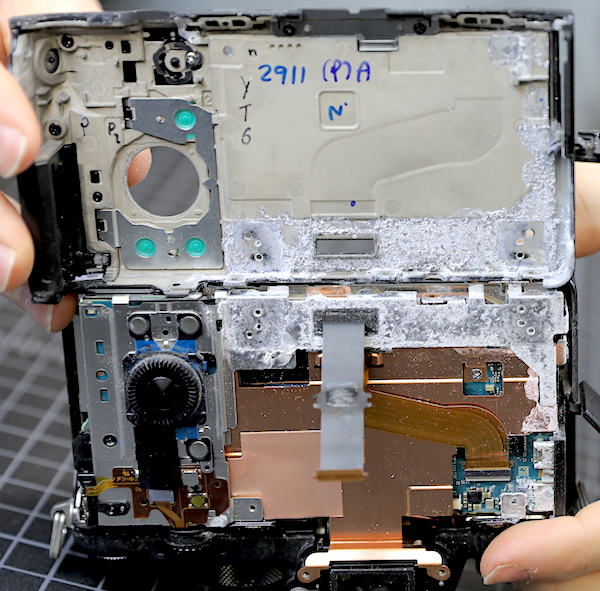
Saltwater, in particular, is much more conductive and is one of the leading causes for a lot of our gear being destroyed over time. While this does usually occur when a camera or lens is dropped in the ocean, the salty air at beaches can also cause plenty of damage over extended periods of time. This is why Roger once said he’d never buy used camera gear from a coastal location – the salt in the air will slowly creep its way into the seams and eventually cause damage to the electronics. But there is an even bigger culprit for ruining gear where you’ll often find large bodies of water – Sand.
Sand Damage
Next on the list of effective ways to destroy your photo gear, is sand. Sand can do damage to camera bodies, but destroys lenses with ease. To put it simply, no rubber gasket is perfect, and those little imperfect gaskets line just about every seal in your lenses. A quick drop in the sand and just about every lens will suddenly have a crunchy focus ring, no matter how ‘weather-proofed’ the lens claims to be.
Though not all sands are equal, and the problem generally comes with the finer grains of sand. The art experience known as Burning Man was just a few weeks ago, and despite our old pleas, we of course got some gear back that ventured out to its first and last burning man. Most notably, are a few Canon R5 Cs that were sent back to us from a Burning Man catastrophe. In the images below, it’s easy to see why these cameras are no longer functioning. All of this is important to note, as Canon claims the Canon R5 C has the same high-quality weather sealing as the Canon R5, something we’ve taken apart in the past and was impressed with. Despite how well the sealing may seem, sand always wins.
Color Runs
While easy to classify as sand, Color Runs in particular always leave gear destroyed because of the fine powder used at the runs. A Color Run is a style of a marathon that encourages spectators to throw colored powder at the participants of the race. The results are a great photo opportunity to capture bright colors coating the faces and bodies of runners, but almost always at the expense of the gear used.


While Color Runs have seemed to drop in popularity in recent years (or maybe people finally learned not to photograph them), we’ve had several cameras come back coated in pink and blue powders over the past decade. Suggestions have been made to cover your camera in plastic wrap before shooting one of these events, but nothing seems to stop this very fine powder from finding its way inside your camera and lenses. And once it’s in your camera or lens, it’s almost impossible to get out.
Dropping Your Camera
Finally, the last way to destroy your camera or lens in just a few seconds is the most common and obvious – gravity. Whereas sand, water, and Color Runs can be marked as intentional negligence, everyone is prone to dropping their camera once or twice. And from my personal experience, most cameras and lenses can take a fall or two before failing. I admittingly beat up some of my gear, and watched my camera and lens take a 3-4ft fall on more than one occasion. However, depending on the height and landing angle, falls can destroy your gear pretty quickly, and make for a costly repair.
There is no surefire preventative way to avoid dropping your gear, but there are a few things that can help. All of our cameras rented come with their straps attached to them. Sure, camera straps aren’t cool, but they work well at keeping your gear attached to your body. And if you’re against having a strap branded with Canon, Sony, or Nikon in big letters, Peak Design and BlackRapid both make incredibly sleek and easy-to-install straps that we recommend.
Certainly, these aren’t the only ways we’ve seen our gear damaged over the years, these are just the most common and frequent damages we see returned to us. If you’re interested in learning more about the more extreme examples of how some of our gear was returned, we have a few interesting articles from the archives to read below.
Related Reading
- A Wild Bear Destroys Our Camera Gear
- Rental Camera Gear Destroyed by the Solar Eclipse of 2017
- Please, Don’t Take Our Photography and Video Gear to Burning Man
- Fuji GFX 100 Vs. Salt Water
- The Lensrentals Podcast – BEST OF: How to Break a Lens
Author: Zach Sutton
I’m Zach and I’m the editor and a frequent writer here at Lensrentals.com. I’m also a commercial beauty photographer in Los Angeles, CA, and offer educational workshops on photography and lighting all over North America.-
Alex Greenfield
-
Kevin Cole
-
Linda
-
DwrCymru
-
Brat Pix
-
Károly Zieber
-
John Q Smith
-
Zach Sutton Photography
-
John Hermanson
